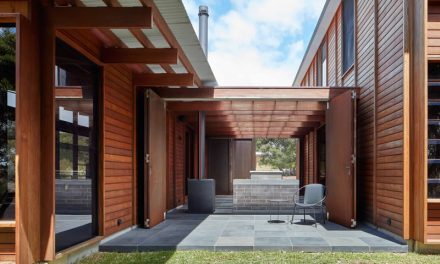How long timber will last in a specific application is a complicated question. It’s important to work out the answer to it. By Craig Kay, national product engineer, Tilling
When I purchased the house that I currently live in, I was encouraged to see there was a brand-new treated timber paling fencing on one side and the back. A cursory inspection revealed treated palings and rails with hardwood posts concreted to the ground level. The fence was new, right, and surely the fencing contractor knew what he was doing and had selected a durable hardwood for the posts?
While the condition of the fencing was not a make-or-break issue when considering the purchase of the house, I had naively expected not to have to do maintenance on this fence for quite a number of years. Alas, such was not the case. The hardwood posts were not long for this world.
The story about this fence exposes once again one of the myths about the natural durability of some indigenous eucalypts. It is a commonly held belief that because a piece of timber is a native hardwood, it’s going to give long service in exposed applications. Not necessarily.
What does natural durability mean?
The heartwood of many timber species is to some degree resistant to biological breakdown. This is termed natural durability and may refer to a wood’s resistance to decay, marine borers, termites or other insects, though it is commonly used in exclusive reference to decay.
The underlying aim of all natural durability classification systems is to facilitate the appropriate use of wood. Woods with resistance to a specific threat should be used in products and environments where this will be of greatest advantage. Conversely, woods with poor natural durability should only be used in low-hazard environments unless they are modified (for example by heat) or preservative treated to withstand greater hazards.
Standards Australia first published AS 5604 Timber – Natural Durability Ratings in 2003. An updated second edition of the standard was released in 2005 and a 2022 version is about to be published. This standard provides a classification system for resistance to lyctids, termites, decay above-ground, decay in-ground and marine borers. Only the sapwood of some hardwood species is susceptible to lyctids (Standards Australia, 2005). These are reported as “susceptible” or “not susceptible”.
Termite resistance was determined from in-ground durability tests of heartwood where possible. In the absence of such data, termite resistance was determined from experience with timber in service. Timbers are classified as “resistant” or “not resistant” to termite attack. Resistance to decay is based on a four-point scale (Table 2 in the standard – see table below). In-ground data was obtained from tests on 50 x 50mm stakes at four sites. Above-ground data was obtained from tests on 35 x 35mm stakes at 11 sites.

There are several key points to understand about the natural durability of timber as a building material:
- Structural timber building elements are made from the trunk of the tree which in itself is made up of five different layers.
- The two layers likely to be found in structural timber elements are the sapwood, an outer layer through which the tree carries nutrients in sap, and the heartwood, the latter often known as truewood.
- No sapwood is naturally durable, irrespective of the species. All sapwood is classed as In Ground or Above Ground Class 4 durability, (0–4 years and 0–7 years respectively)
- Sapwood of many species may be made durable by preservative treating. However, it is important to understand that not all sapwood can be preservative treated because some species are classed as refractory and are difficult, if not impossible, to penetrate with preservatives.

When a technical publication refers to the natural durability of a timber species, it is referring to the heartwood only. Technically, one could buy a piece of structural timber that is designated as having a Natural Durability of Class 1 but, because it is cut from all sapwood, when placed in the ground it could fail because of decay within the first year.
Also, the outer heartwood is more durable than the inner heartwood, especially near the pith, and there can be a variation in durability within the given species and also within the same tree. Durability ratings are a general guide, not an absolute rule.
Returning to my fence example, because I live in Victoria, the hardwood post used by the fencer was most likely from the Eucalypt spp. Alpine Ash or Mountain Ash, that are marketed as Victorian Ash. While it is a very strong timber, both have Class 4 in-ground contact durability (ie. 0–7 years) and are thus totally unsuited for the application.
To add insult to injury, the fence builder – I assume out of a lack of knowledge – set the hardwood posts in concrete. ‘Doesn’t everybody do that?’ you may reasonably ask.
Setting hardwood post in concrete is deadly sin No 6 listed in an excellent book called The Seven Deadly Sins of External Timber Design by Ted Stubbersfield, lead timber consultant at BCRC Durability Consultants.
As the timber ages and shrinks, a gap develops between the post and the concrete and moisture is trapped in that gap. In a garden situation where there is frequent watering and the addition of fertiliser, this moisture and fertiliser promotes decay organisms which rapidly decompose the post at ground level. Any hardwood post used in landscaping applications should be backfilled with either natural earth if suitable or fine crushed rock, or else using no fines concrete, which has a high drainage capacity.
So, what is the moral to this tale about my fence, and how does it relate to the broader issue of designing timber for durability? Ignorance is not a defence! (Oh dear, an engineer making a pun…)
I would argue that it is incumbent upon us all who design and specify wood as a building element that durability design stands equally with structural design. It is very short-term thinking to allow a wood-based structure to be placed an environment where it’s not suited.
Everybody loses: the customer because the product fails prematurely; the supplier who may have to replace it under some consumer warranty; and, perhaps worst of all, the reputation of wood as a durable building material is diminished to the point where it is no longer used and is replaced by other materials.
There is a wealth of easily understood information available on this topic, with a few options listed below:
- WoodSolutions Website
- WoodSolutions Design Guide #5 Timber service life design
- WoodSolutions Design Guide #14 Timber in Internal Design
- Technical Guides on weather exposed timber by Ted Stubbersfield
If anyone is designing important outdoor structures such as timber decks, boardworks and footbridges, especially where they are to be used by the public, the Technical Guides by Ted Stubbersfield should form an integral part of pre-design research.
For the sake of an ongoing timber industry, we all have a duty of care to design only to wood’s strengths and not place it in areas where we know it will fail.
Craig Kay is the national product engineer for Tilling. For more information on this topic, contact Craig Kay and the Tilling engineers via email at techsupport@tilling.com.au












